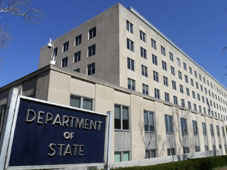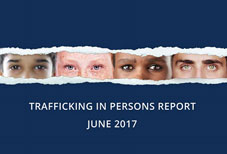
Georgia fully meets standards for trafficking elimination
By Tea Mariamidze
Friday, June 30
The United States (US) Department of State has released its latest Trafficking in Persons 2017 report, which says that Georgia fully meets the minimum standards for the elimination of trafficking and continuously carries on consistent and coordinated actions against human trafficking.
“The government continued to demonstrate serious and sustained efforts during the reporting period; therefore, Georgia remained on Tier 1,” the report reads.
It also added that the Georgian government continued to provide comprehensive care for all identified victims and conducted robust awareness campaigns.
The document says that the Georgian government increased trafficking prevention efforts and the Inter-Agency Council on Combating Trafficking in Persons (TIP Council) approved the 2017-2018 national action plan.
“Government officials funded and participated in an increased number of television, radio, and print media programs to raise awareness,” the report reads, adding that the government provided anti-trafficking training for its diplomatic personnel and its armed forces prior to their deployment as peacekeepers.
However, the report says that despite the fact that Georgia meets the minimum standards authorities did not increase anti-trafficking law enforcement efforts and identified fewer victims.
“The labor inspectorate continued to operate with an unclear mandate and restricted ability to investigate employers. Victim identification remained weak for children in exploitative situations on the street, such as those subjected to forced begging and criminality, and for individuals working in vulnerable labor sectors,” the document reads.
The US department of State also released some recommendation for Georgia concerning trafficking. They are:
1. Vigorously investigate, prosecute, and convict traffickers under article 143;
2. Improve efforts to proactively identify trafficking victims, particularly street children and Georgian and foreign victims in vulnerable labor sectors;
3. Increase law enforcement capacity to investigate complex cases;
4. Further incorporate the labor inspectorate in anti-trafficking efforts with established roles and responsibilities;
5. Improve measures to guarantee victims’ access to compensation, including asset seizure, informing victims of their rights to compensation, and legal assistance;
6. Increase transparency of the inter-ministerial trafficking coordination council;
7. Fully implement the law that provides street children with free government identification;
8. Create integrated, interagency strategies for reducing vulnerability and countering forced begging;
9. Continue awareness-raising campaigns about the existence of human trafficking, legal recourse, and available protection services, targeted at vulnerable groups.
Through the Office to Monitor and Combat Trafficking in Persons, the US State Department annually assesses actions carried out by 188 states to combat trafficking in persons.


